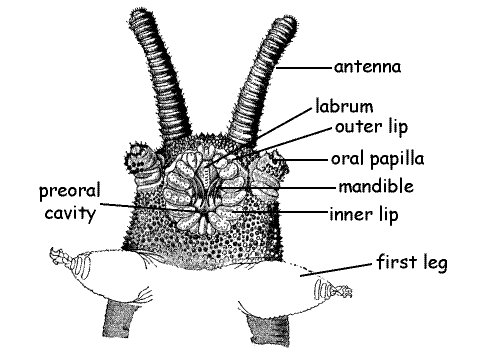
So, what’s the deal with these slime glands and legs? Simply put, they help velvet worms hunt their prey and move around their environment. Their anatomy is specifically designed to thrive in their moist habitats, and understanding how these features work can give you a better appreciation for these remarkable creatures. Let’s dive deeper into the fascinating world of velvet worm anatomy!
What are Velvet Worms?
Velvet worms, or onychophorans, are a unique group of invertebrates that have inhabited Earth for millions of years. Despite their ancient lineage, they still capture our imagination today. These creatures can be found in damp, tropical areas and tend to keep things pretty low key—mostly sneaking around under leaves and logs.
They have a soft, body covered in tiny, hair-like structures known as *papillae*, which give them their velvety appearance. Additionally, they possess a pair of eyes that are simple, much like those of some insects, giving them a limited view of the world. Their bodies are segmented, which is a feature they share with worms and some arthropods, creating a fascinating link between these distinct groups of animals.
The Role of Slime Glands
One of the most interesting aspects of velvet worm anatomy is their slime glands. Located along the sides of their bodies, these glands produce a sticky, viscous substance that serves multiple purposes. When velvet worms are hunting, they can shoot out this slime to trap their prey. Picture this: a small insect scurries by, and in the blink of an eye, the velvet worm ejects a quick stream of slime that ensnares its target. It’s an impressive hunting technique that works remarkably well.
The slime isn’t just for catching lunch, though. It also plays a role in defense. If a velvet worm feels threatened, it can produce a large amount of slime to create a barrier between itself and its attacker. This can confuse predators, allowing the velvet worm time to escape, which is crucial for their survival in the wild.
How Slime Works: A Sticky Situation
You might be wondering, how does the slime actually work? It’s a combination of proteins and other substances that create a gooey texture. Once the slime comes into contact with a surface or an unsuspecting insect, it rapidly adheres, immobilizing the prey. The velvet worm then moves in for the kill, using its sharp jaws to deliver a quick, lethal bite.
Interestingly, the slime can also help with hydration. Velvet worms are moisture-dependent creatures, so the slime can help retain water in their bodies, preventing them from drying out. In humid forests, this is a significant advantage as it helps them stay moist and healthy.
The Function of Claw-Like Legs
Now, let’s talk about their claw-like legs. Velvet worms have around 14 to 43 pairs of these appendages, depending on the species. Unlike most insects, these legs are not jointed, adding to their unique movement style. They can’t hop or fly, but they can crawl with surprising agility, almost like little inchworms.
These legs are equipped with tiny claws at the ends, which help them grip surfaces as they move. They use them for climbing and navigating through their forest floor homes. Imagine a mini-lizard trying to climb a tree; velvet worms do something similar but on a smaller scale. The claws give them the grip they need to traverse their often slippery environments safely.
How Velvet Worms Move
You might find yourself curious about how velvet worms coordinate their movements. Thanks to a combination of muscular contraction and their leg structure, they can move fluidly across various terrains. They use a wave-like motion to help propel themselves forward, which can look quite mesmerizing up close.
They can also adjust their movement speed based on their surroundings. If they’re on a smooth surface, they can glide more effortlessly, while rough terrains require a bit more effort. This adaptability is crucial for their survival, allowing them to escape predators and search for food effectively.
The Importance of Velvet Worms in Ecosystems
Velvet worms may seem like small players in the ecosystem, but they serve essential roles. By preying on insects, they help maintain population balance. This, in turn, contributes to the overall health of the forest floor ecosystem. They also serve as a food source for larger animals, creating a cycle of life in their habitat.
Additionally, studying velvet worms can provide insights into evolutionary biology and the history of terrestrial life on Earth. Their unique adaptations and ancient lineage make them valuable for understanding how creatures have evolved to navigate different environmental challenges.
In conclusion, the anatomy of velvet worms, with their remarkable slime glands and claw-like legs, sheds light on how these creatures thrive in their environments. Their ability to produce slime for hunting and defense, coupled with their unique way of moving, showcases the wonders of nature. Next time you stumble upon a velvet worm, you’ll appreciate it even more, knowing all the amazing adaptations hidden within its soft, velvety body. They might be small, but they certainly pack a punch in terms of anatomy and ecological significance!
